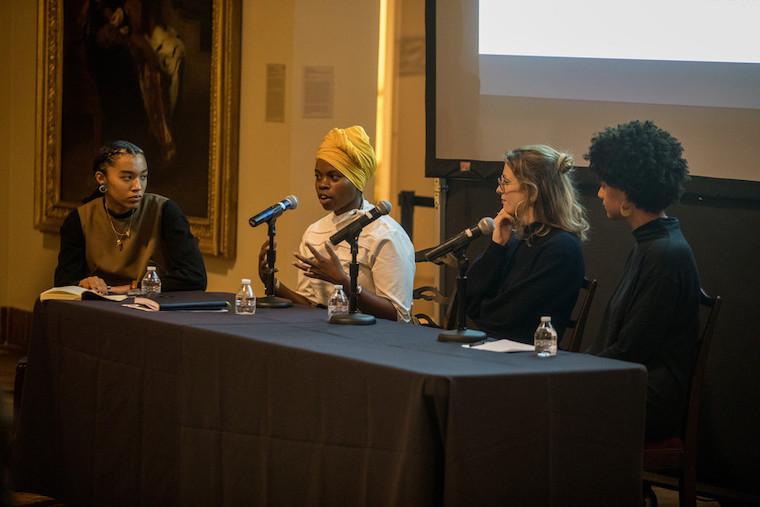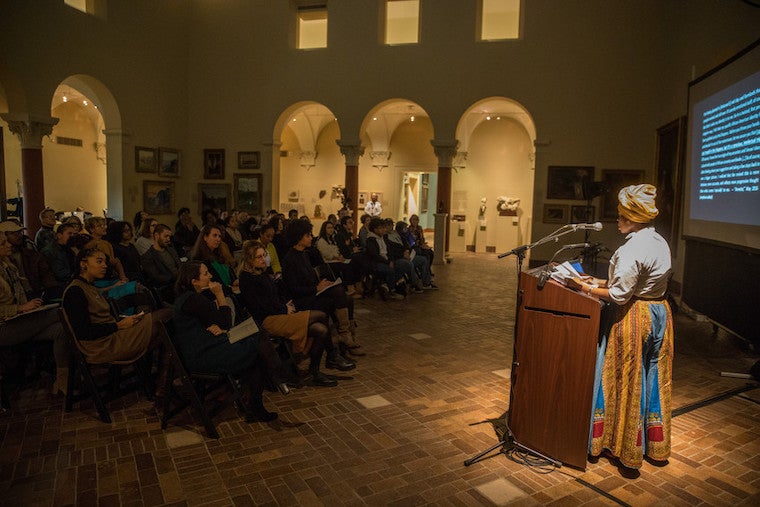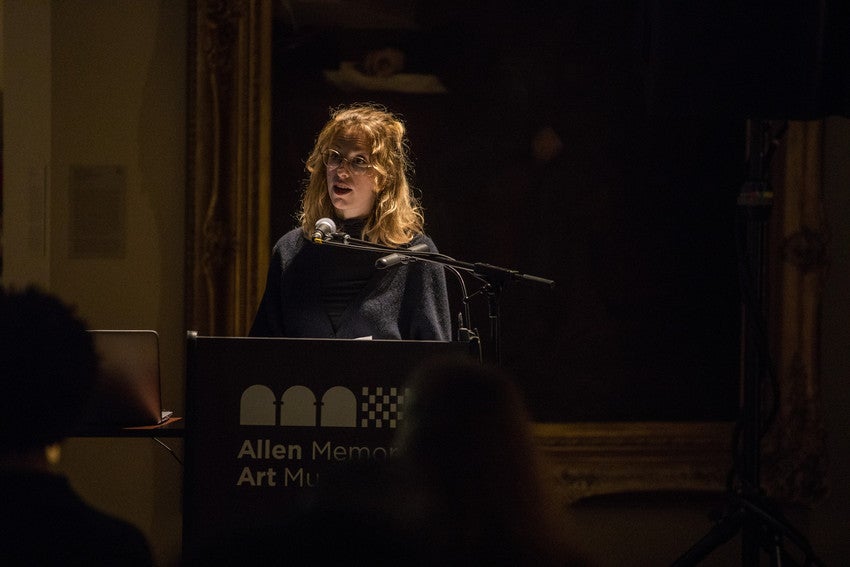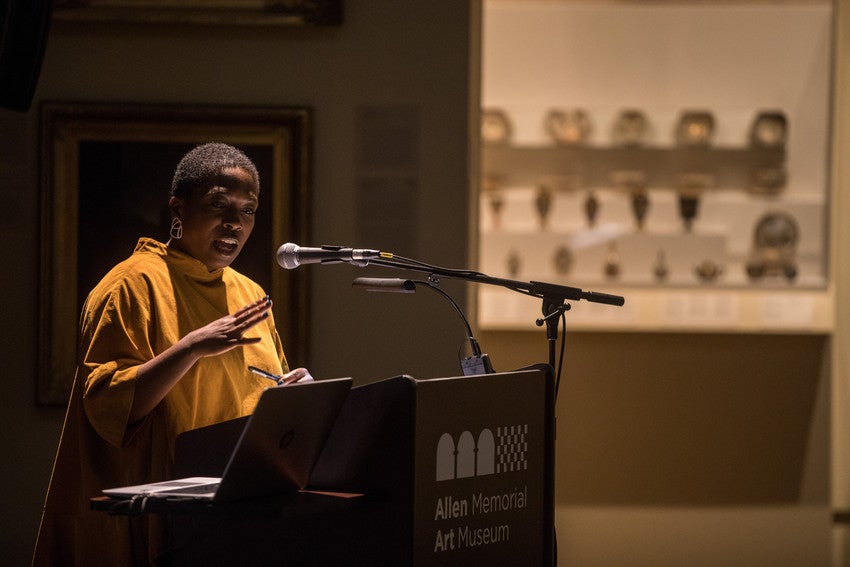Creating Space, In Oberlin
November 28, 2018
Erin Ulrich ’18

Panelists from left Octavia Bürgel ’19, Kantara Souffrant ’08, Abbe Schriber ’09, and Alexandra Nicome ’17
Photo credit: Scott Shaw
Alumni panelists who participated in the symposium, Creating Space: Curating Black Art Now, respond to the following question in their own words: “Why is it significant for the Allen Memorial Art Museum to be self-reflective about the representation of works by artists of color in its collection?”
Cosponsored by the Department of Art and as part of Kuumba Week, Oberlin’s annual celebration of black creativity, alumni returned to campus to participate in the daylong symposium held at the Allen Memorial Art Museum (AMAM). Alumni speakers and panelists reflected on what it means for art museums, including the AMAM, to reflect on the discrepancies between works by artists of color and those by white artists in their collections.
From imagining the museum as an alternative classroom space, to envisioning what increased engagement between the AMAM and surrounding communities could look like, the symposium explored the role of museums in fostering conversations around inclusivity and representation.
Kantara Souffrant ’08, visiting assistant professor of the arts of Africa and the Black Atlantic:

Photo by Scott Shaw
Museums, similarly to houses of worship, public libraries, and public schools, represent some of the last areas of public space. Museums, as public spaces, must facilitate public discourse around identity, equity, and inclusion because they are implicitly and explicitly engaged with representations of people, culture, ideas, gender, and race.
I recall visiting the AMAM once as a student because I took an art history course and had to. Otherwise, it was not a space that I, as a woman of color and the child of immigrants, felt "belonged to me." Museums did not feel welcoming. The AMAM, as both a museum and a museum tied to an academic institution, must be self-reflective about the works in its collection and especially the lack of representation by artists of color and women. Ignoring these groups dismisses the knowledge of multiple peoples and thereby devalues them.
Such acts undercut AMAM's value as a public space, a space for discourse, and an educational resource.
Abbe Schriber ’09, PhD candidate at Columbia University:

Photo by Scott Shaw
Objects can help us see connections between systemic operations of patriarchy, colonialism, and racism, through the materials used, the artist's process, facture and surface, craftsmanship (or rejection of these things). In this sense, we not only need to be thinking about representation, but about how artists of color and their objects are represented and contextualized, in order to dismantle easy categorization or cliched tropes about race and racial thinking.
This should not, and cannot, just apply to modern and contemporary art, but should extend to all aspects of the collection, really a question about what we currently consider "American" and "Western," and how to decenter the narrative that privileges them.
In many ways, the larger question is how to sustain the current interest and call for American museums—and all institutions—to reexamine their representation of artists of color beyond surface attempts to fill quotas or demonstrate diversity. It is always important and should always be an imperative.
Further, as they open up toward deeper inclusivity, museums need to be thinking about the perils and pitfalls of “assimilation:’’ How can museums and classrooms respect, engage, and glean knowledge from multiple lived experiences and cultural traditions without merely absorbing them into the existing, dominant perspective, or a “universal’’ perspective?
Lauren Haynes ’04, curator of contemporary art at the Crystal Bridges Museum of American Art:

Photo by Scott Shaw
It was great to see the exhibition, Radically Ordinary: Scenes from Black Life in America Since 1968 and to see all of the works by black artists that have been added to the AMAM’s collection since I was a student. Hopefully, the AMAM will continue to be a resource for Oberlin students who are interested in getting a more complete picture of art history than is often taught in traditional art history programs.
You may also like…
Josh Nolan Named Vice President, General Counsel, and Secretary at Oberlin
Distinguished attorney brings extensive experience in higher education law.
Learning by Teaching: Oberlin Students Share Global Music with Young Learners
College and Conservatory students in PACE 103 prepare local children for an immersive community concert at Oberlin.
Nuiko Wadden ’02 Joins Oberlin Conservatory Faculty as Assistant Professor of Harp
The versatile musician brings extensive opera, orchestral, and contemporary music experience to her role


